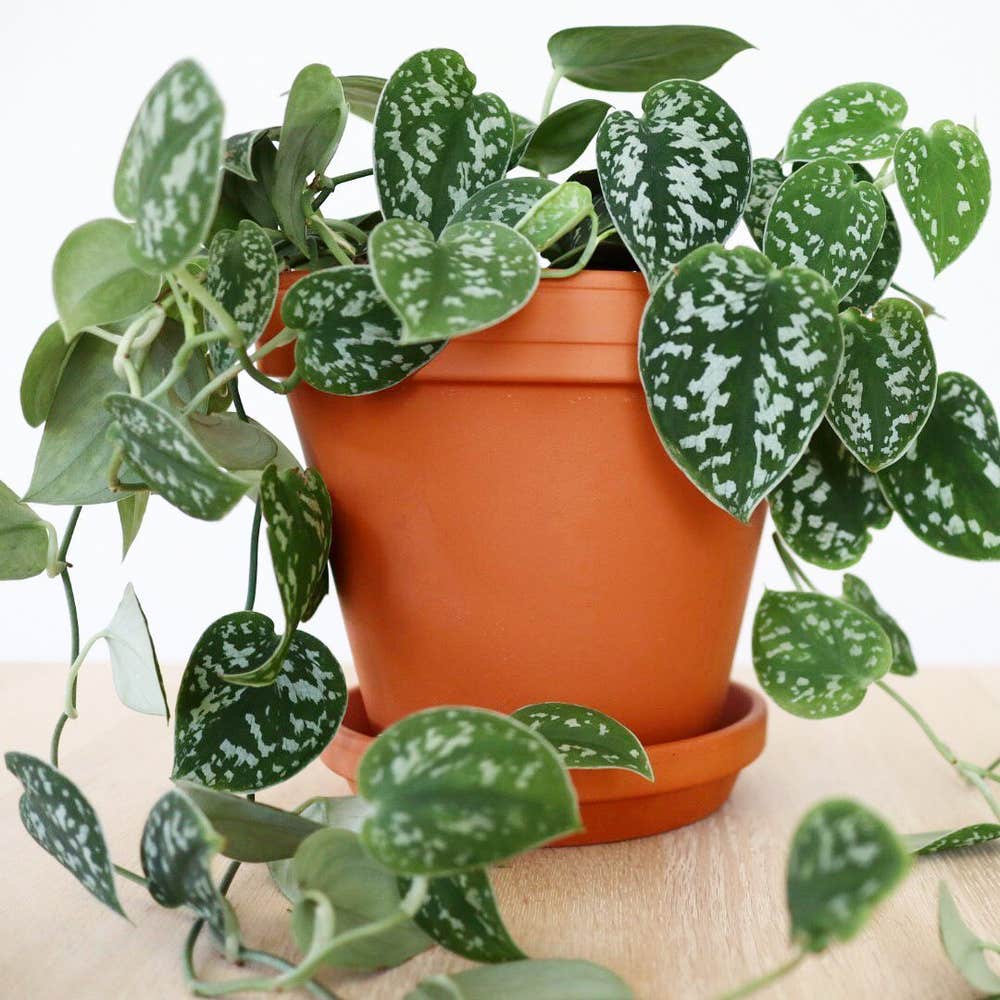
Satin Pothos Plant: A Complete Guide
Introduction to Satin Pothos Plant
The Satin Pothos plant, also known as Scindapsus pictus, is a popular houseplant that is loved for its beautiful foliage and low-maintenance care requirements. This plant is native to Southeast Asia and belongs to the Araceae family. It is a vine plant that can grow up to 6 feet long and is known for its heart-shaped leaves that have a satin-like texture.
Appearance of Satin Pothos Plant
The Satin Pothos plant has striking silver-green leaves that are adorned with splashes of silver variegation. The leaves are slightly elongated and have a waxy texture that gives them a shiny appearance. The plant’s trailing vines can be trained to climb or left to hang down, making it a versatile addition to any indoor space.
Light and Temperature Requirements
Satin Pothos plants thrive in bright, indirect light but can also tolerate low light conditions. They should be kept away from direct sunlight, as this can scorch their leaves. The ideal temperature range for these plants is between 60-85 degrees Fahrenheit, making them suitable for most indoor environments.
Watering and Humidity Needs
It is important to water Satin Pothos plants when the top inch of soil feels dry to the touch. Overwatering can lead to root rot, so it is best to allow the soil to dry out between waterings. These plants prefer a humid environment, so misting the leaves or placing a humidifier nearby can help to keep them happy and healthy.
Soil and Fertilizer Requirements
Satin Pothos plants thrive in well-draining soil that is rich in organic matter. A mix of potting soil and perlite or sand can help to provide the proper drainage that these plants need. Fertilize your Satin Pothos plant once a month during the growing season with a balanced liquid fertilizer to promote healthy growth.
Pruning and Propagation Tips
To keep your Satin Pothos plant looking its best, regularly prune away any yellow or damaged leaves. You can also trim back the vines to encourage bushier growth. These plants are easy to propagate from stem cuttings, which can be placed in water or directly in soil to root and grow into new plants.
Common Pests and Diseases
Satin Pothos plants are relatively resistant to pests and diseases, but they can occasionally be bothered by mealybugs, spider mites, or scale insects. Keep an eye out for any signs of infestation, such as yellowing leaves or sticky residue on the plant, and treat the problem promptly with insecticidal soap or neem oil.
Benefits of Satin Pothos Plant
In addition to being a beautiful addition to any indoor space, Satin Pothos plants also have air-purifying qualities that can help to improve the air quality in your home. These plants are known for their ability to remove toxins such as formaldehyde, benzene, and xylene from the air, making them a valuable asset to any indoor environment.
FAQs about Satin Pothos Plant
Q: Is Satin Pothos plant toxic to pets?
A: Yes, Satin Pothos plants are toxic to pets if ingested. It is best to keep these plants out of reach of pets and children to prevent accidental ingestion.
Q: How often should I water my Satin Pothos plant?
A: Water your Satin Pothos plant when the top inch of soil feels dry to the touch. Overwatering can lead to root rot, so it is best to err on the side of underwatering.
Q: Can Satin Pothos plants be grown outdoors?
A: Satin Pothos plants thrive in indoor environments with bright, indirect light. They can be grown outdoors in warm, humid climates, but they should be protected from direct sunlight and extreme temperatures.
Conclusion
In conclusion, the Satin Pothos plant is a beautiful and easy-to-care-for houseplant that can add a touch of greenery to any indoor space. With its striking foliage, low-maintenance care requirements, and air-purifying qualities, this plant is a great choice for both beginner and experienced plant enthusiasts. By following the tips and guidelines outlined in this guide, you can enjoy a thriving Satin Pothos plant in your home for years to come.